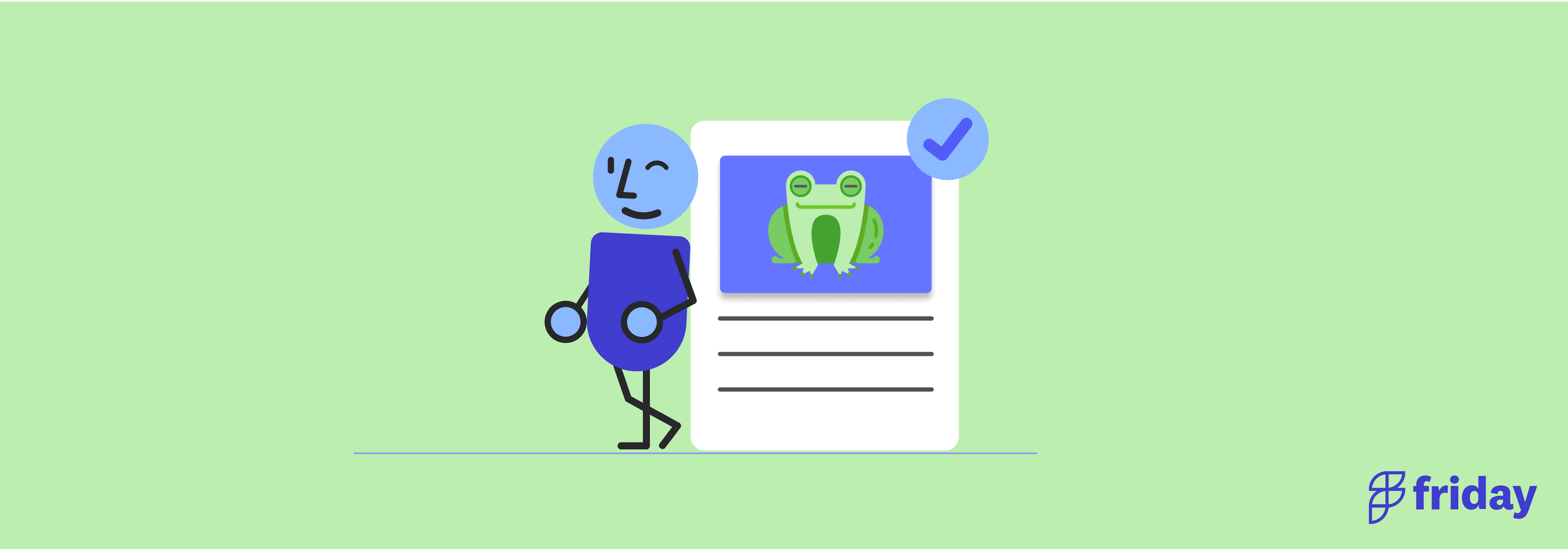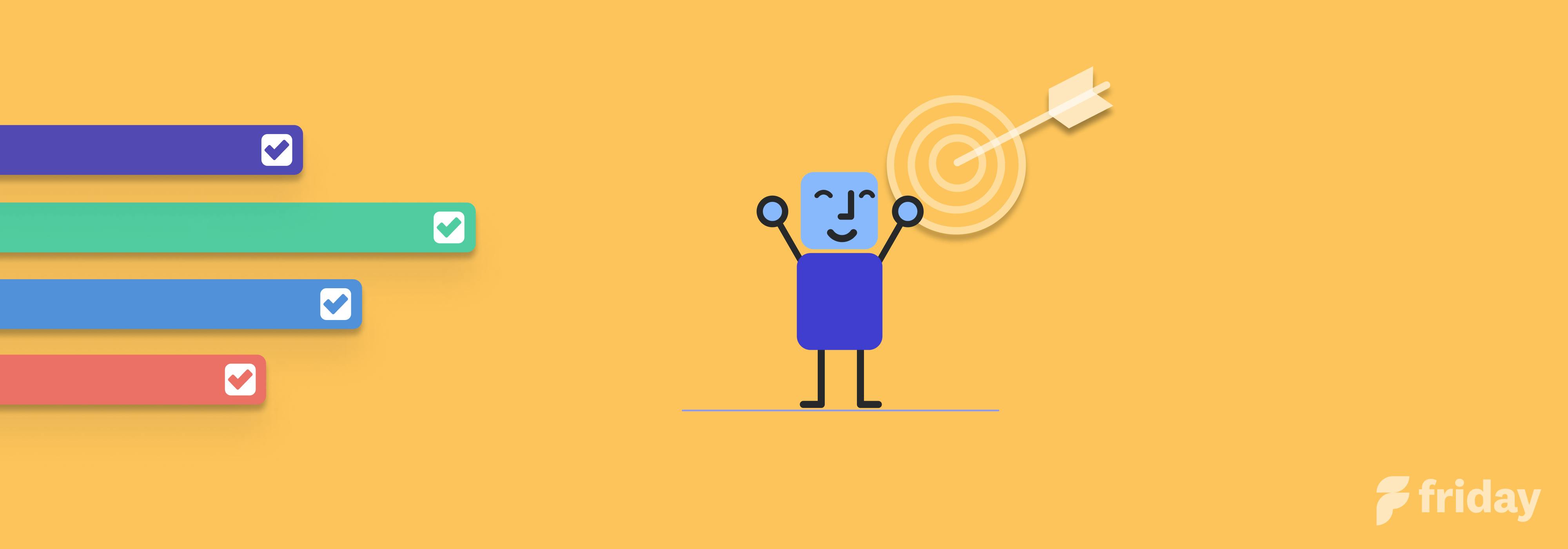Eat the Frog for a Big Leap in Productivity

While a frog in the throat is common parlance for a bad cough, eating the frog is something different entirely, and quite a lot healthier, we’ll add. The expression "eat the frog" may seem a bit childish, but it embodies an extremely practical philosophy for reaching your goals.
Assuming you’ve lived a little, there are lots of things you aren’t especially fond of doing, but these niggling jobs quickly mount up. The better at cracking on with these tedious tasks you become, the more success you will have, and the Eat the Frog technique helps you do exactly that.
While numerous species of frog are known to be poisonous, we think procrastination is just as toxic. Eating the Frog is an invaluable weapon in the perpetual fight against idleness, an efficiency-enhancer for both home and workplace.
What does the expression Eat the Frog mean?
As far as the conception of the phrase goes, the evidence points clearly to the French writer Nicolas Chamfort.
Originally, the phrase was an aggressive criticism of high-society, suggesting that swallowing a toad is such a miserable thing to do that doing it daily would make the stuffy, elaborate affairs and behaviors of the aristocracy more bearable.
The phrase quickly became more generalized, thanks to a copy of the Evening Post in 1872, which read “a man should swallow a toad every morning so that he might meet with nothing more disgusting during the rest of the day.”
Nowadays, we’ve adopted it into the world of productivity, using it to mean that your most dreaded tasks, whether through difficulty or disinterest, should be done first thing, every day. The reason being that those are the most tempting to procrastinate because they’re the most intimidating.
Why Should I Eat the Frog?
Without forming the habit of tackling activities head-on, you’ll procrastinate.
It needs to be a conscious effort as we tend to gravitate towards easier, simpler tasks, especially when we’ve got a lot on our plate. In fact, a 2019 study took data of 233,000 patients from 84 institutes and found that “physicians are more likely to pick up easier patients (compared to picking up a difficult patient) when the workload is higher.”
While this kind of instinct protects against burnout, it can cause problems for our productivity in the long run; as the study continues, “Although always selecting the harder task may be suboptimal, if one continually chooses the easier... longer-term performance suffers.” In our personal goal-striving, we aren’t lucky enough to have other doctors around to take on our less desirable work. It’s not a case of choosing easy tasks over hard... we need to do both.
Eating the frog is the productivity system that has you jumping in at the deep end. We all know that feeling of finishing a daunting task, finally pushing through what you’ve been putting off. It’s incredible! So, why not give yourself that feeling every morning, setting yourself up for an amazingly productive time.
In the book, Eat That Frog! renowned productivity specialist Brian Tracy discusses how people who start with the hardest task first are ultimately more productive. This was largely because doing so allows you to start your day in a proactive way (project tasks) rather than a reactive way (responding to emails).
He also notes that the morning is usually the most productive time of day, so you’re better equipped to attack the most challenging task (frog) to optimize your energy hours.
So Which of My Tasks are Frogs?
Although frogs are very often your hardest tasks, they don’t have to be cumbersome or complicated, so you’re free to put away the algebra and astrophysics. A task can be a frog by the same criteria of other priority techniques like a to-do list or an Eisenhower decision matrix, namely importance (value) and urgency (time).
However, frogs can also be anything that is at high risk of being procrastinated. Housekeeping duties like paying a bill are just as frog-like as studying for an exam or arranging a doctor’s appointment. Frogs are these everyday or specialized tasks that we aren’t particularly excited about doing, but are actually rather useful.
Just as the difficulty of your tasks is relative to your abilities and resources, frogs are associated with your personal preferences. What areas of life do you have a tendency to ignore?
If you’re hopeless at exercise, your frog might look like a sweaty morning run – maybe even a hop, if you’re taking things a bit too seriously!
How Friday Can Help You With Your Biggest Tasks
Friday is your command center for winning the workday. Plan your "frog" and your other tasks with the Friday daily planner.

Everything is right there in Friday: including your tasks and meetings in one view.
You will have a clear sense of what needs to be accomplished. Friday pulls in tasks from the task apps you already use, or you can make a brand-new to-do list.
Get an overview of your day so that you can focus on eating that frog.
Best features:
- See your meetings next to your tasks in one view
- Integrate personal and work tasks from the task management apps you already use
- Receive a daily agenda email that summarizes the day ahead
- Block distracting websites with the Chrome extension & free up more time to focus
- Use it for work journaling or bullet journaling
- The Today view makes it easy to see what you need to work on next (see image below for an example)
How do I Eat the Frog?
It’s a frog for a reason, you know. You won’t get any immediate enjoyment by doing the worst tasks first, but getting it out of the way will later reveal a remarkably positive effect.
If you’re fed up with frog talk, there’s also the phrase bite the bullet. Either way, the only way to stop procrastinating is to start doing.... implausibly simple, right? Once you’ve established the things you typically procrastinate – housework, hobbies, health – set a relevant task and get it over with.
Though the original quotes mention mornings, eating the frog is simply prioritizing, on the premise that you should do the hardest thing first. Even though most find that the best time is early hours, it doesn’t matter when your starting point is. If you aren’t a morning person, you can just as effectively schedule time whenever and follow the same principle of getting the intimidating tasks out of the way first. It could even be at night, providing you have minimized distractions.
Similar to the Getting Things Done (GTD) method, you should start the task as soon as possible, even if that means sacrificing other tasks; that’s what prioritization is, after all. Further, once you’ve begun the task, fully commit to it and avoid breaks at all costs until you’ve achieved it.
The exact process isn’t explicitly defined. As with any good productivity tool, there’s room for customization, but here’s one way to look at it:
1. Find the Frog
The reasons we procrastinate are hazy and there’s been extensive research on the subject, but oftentimes your frog is representative of a larger aim or aspect of life. It could be a genuine determination to develop your professional career or picking up a new hobby. In practically all situations, goal-setting comes first, so identify the areas where procrastination is rife, find the tasks you never get round to, and know them as frogs.
2. Chop, Chop, Chop
You can’t make progress stuck in the clouds, so the next step is to chop the frog into small tasks that can be done in a sensible amount of time. In fact, eating the frog won’t be enough by itself, so use complementary techniques like task-batching as well. If you’re consistent in your productivity practices, you should already be keeping to-do lists or some form of daily schedule. Keep frogs in mind when you’re actually creating these so that you have something for every morning.
3. A Frog a Day
In the same way that keeping a daily journal will empower you to create healthier work habits, you need to consistently eat frogs. Religious repetition will eventually automate the entire process, so you literally change how you approach daunting tasks. As an added bonus, continuously beating these tasks first thing every morning enhances self-efficacy and raises motivation.
What if the Frog Tastes bad?
By definition, your frog is something that you don’t like doing, or that you aren’t fond of, so you won’t really enjoy it, nor should you expect to. Just focus on the result: you will have accomplished something that you have been putting off for a while, making you closer to attaining your larger goals. All the while, keep in mind that eating the frog is a positive approach. Even though you can be fully aware that you aren’t going to have fantastic fun, if you consider it as a reluctant trudge, you won’t want to do it again.
Eating the frog should make you feel accomplished if you’re looking to make it a habit. According to one entry into Health Psychology, “the feeling of satisfaction indicates that the initial decision to change the behavior was correct.” In essence, the rush you feel by finishing a frog encourages you to bite into another, kind of how people eat unpleasant health foods because they’re good for you.
Eating the Frog is an early opportunity to hit the ground running, a troublesome yet achievable task that sets the tone for an amazing workday.
A popular study from 1999 showed that, for students taking exams, “perceived test difficulty did not have a direct effect on test performance, but instead it had an indirect effect through the mediation of worry.” While predicting that the questions would be hard didn’t have a negative impact in itself, “students who perceived the test more difficult showed higher worry [which] had a negative effect on students’ test performance.”
In short, worry weakens work. So, if eating the frog is making you fret, you’re doing it wrong. Calm, controlled optimism is the best state for any task-management. This method was designed specifically to reduce procrastination, a negative behavior so, as with any attempt to change behavior, you need to remain positive.
Final Thoughts on Eat the Frog
As a principle to start your day with, the value of eating the frog is pretty uncontested. It’s marvelously simple, meaning anyone can do it. It brings about positive growth by adjusting the way we work on our less favorable or intimidating tasks, though with that comes one major issue: it’s deceptively difficult to master, as it’s a direct assault on a negative behavior.
You may have to eat a pond-full before you truly get used to it, but when you do you’ll see a massive impact on your task and goal-commitment. Turn your life into a true productivity fairytale, not by kissing the frog to reveal a prince, but swallowing the damned thing whole!


